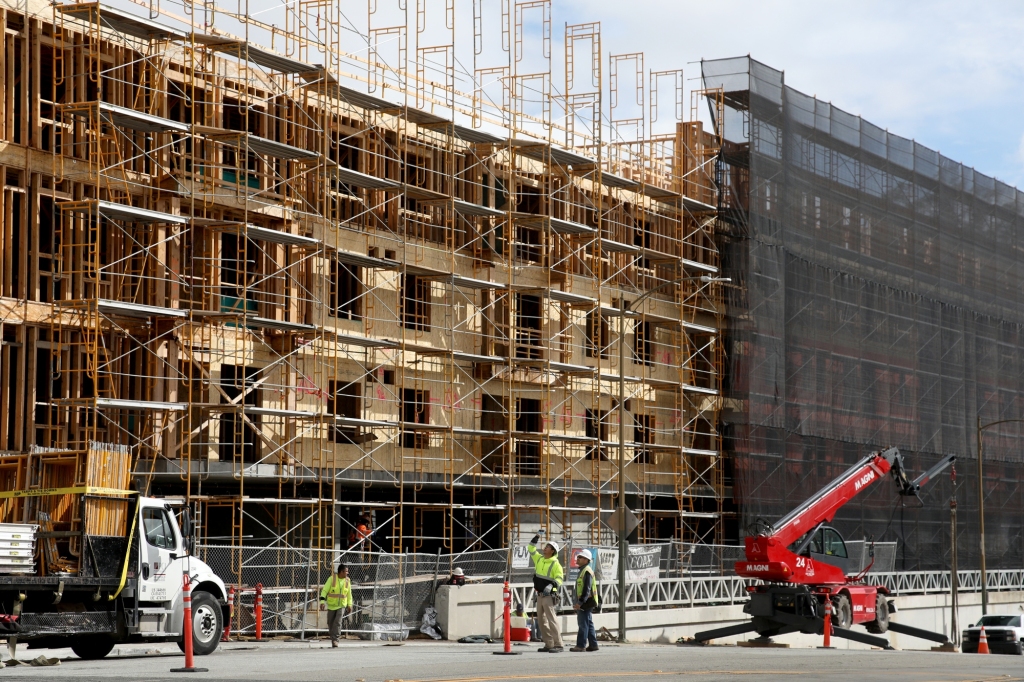In an effort to ease California’s intensifying housing crunch, state lawmakers this week pushed through two bills making it easier to redevelop underused shopping malls, office buildings and parking lots into new apartments and townhomes.
Supporters are celebrating the reforms — which limit the ability of local governments to block such multifamily housing projects — as a “game-changer” and say the bills could help create hundreds of thousands of new market-rate and affordable homes across the Bay Area.
“We’re seeing a lot of places with half-filled strip malls, and it’s really not serving the needs of people in our communities,” said Assemblywoman Buffy Wicks, an Oakland Democrat who authored one of the bills. “What we’re grappling with is reimagining how are cities going to operate in the modern era?”
The two bills — Assembly Bill 2011 and Senate Bill 6 — come after months of negotiation among housing advocates, affordable housing developers and the state’s powerful construction unions. The measures are expected to be signed into law by Gov. Gavin Newsom, who has made increasing housing production a top priority as rents and home prices have skyrocketed in recent years.
AB 2011 would streamline the approval process for 100% affordable projects on most properties currently zoned for retail, offices or parking, and restrict local jurisdictions’ power to deny those developments. The bill would also speed up approvals for projects that have at least 15% low-income units along busy commercial corridors. Notably, it would exempt the developments from the often lengthy environmental review process required under the California Environmental Quality Act, which developers have long blamed for holding up or killing projects.
SB 6, meanwhile, would bypass rezoning requirements for new multifamily housing on commercial property regardless of affordability levels. But unlike AB 2011, it wouldn’t force cities and counties to expedite approvals for projects that meet set building and design standards.
The bills moved forward Monday as a compromise after lawmakers failed to come to a deal over potentially combining the two measures due to objections from some construction labor groups, which have thwarted state housing legislation in the past. The sticking point was whether developers taking advantage of a new law should be required to use a certain number of skilled and trained workers, who tend to be union members.
In the end, lawmakers agreed that just SB 6 would mandate developers seek out skilled labor, and AB 2011 would require them to give workers union-level wages, healthcare and other benefits.
Housing advocates say the bills could free up thousands of acres of limited available land for new housing in the Bay Area, while also putting a dent in the region’s astronomical development costs by simplifying the sometimes years-long local permitting and entitlement process.
Louis Mirante, vice president of public policy at the Bay Area Council, estimated the legislation could eventually help create 500,000 to 1 million additional units in the region, as the Bay Area works to meet its upcoming state housing goal of more than 441,000 new homes between 2023 and 2031.
Across the entire state, a report by data analytics firm Urban Footprint found AB 2011 alone could spur 1.6 million to 2.4 million homes.
In the Bay Area, Mirante expects developers to use the bills to build along corridors such El Camino Real in the South Bay, Shattuck Avenue in Berkeley and other “central business areas that are already starting to see more development.”
To further boost home construction, he pointed to another state bill nearing approval called AB 2097, which would effectively eliminate parking requirements for new housing projects near transit. “That could reduce costs to construct overnight,” he said.
Other housing bills making their way to the governor’s desk include AB 2221, which would make it easier to build backyard in-law units (also know as accessory dwelling units), as well as SB 886, which would fast-track the environmental review process for student housing.
As lawmakers near the end of their 2021-22 legislative session, they have also sent to Newsom a bevy of other high-profile proposals, including a bill to bolster wages and working conditions for fast food employees, an online privacy bill for children and a proposal to make kindergarten mandatory. Lawmakers have also passed a series of bills that would expand access to abortion, as the state moves to welcome women seeking the procedure from states that have banned it. Earlier this month, Newsom vetoed a controversial bill to legalize safe injection sites for drug users in some cities.
Neighborhood groups have pushed back hard on the housing bills over concerns the state is stripping away land-use decisions from cities and counties. One group, Livable California, described AB 2011 as a “massive state taking of flexibility needed by local jurisdictions to place housing where it best meets the needs of the community.”
For some affordable housing developers, tempering local control is a big reason they pushed for the bill’s passage.
Larry Florin, president of Burbank Housing in Santa Rosa, said scaling back environmental reviews and public planning hearings — where neighbors sometimes pressure local officials to deny new housing — could incentivize developers to include affordable units in their projects.
Florin is optimistic the bills could lead to the redevelopment of the aging Santa Rosa Plaza mall.
“The process has been daunting for developers wanting to get involved,” Florin said. “And if they now look at a clear path forward, I think you’re going to get a lot of interest from the private and nonprofit sector for repurposing these buildings.”










